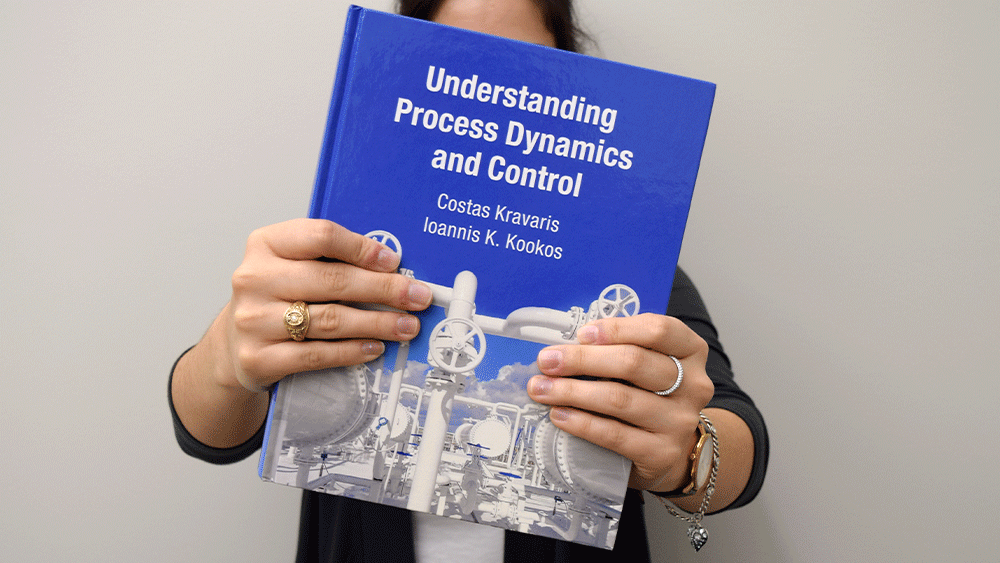
With every passing semester, engineering textbooks are handed down from student to student. As decades go by, textbooks develop their own character — the pages become a bit dingy, the corners of the cover curve inward and if you’re lucky, maybe several highlighted marks give way to important information. However, as textbooks age, so do the concepts within.
Many scholars are still teaching and learning from the same textbooks available nearly 60 years ago despite monumental changes in research and technology. Course materials that consider these variables are needed to convey engineering in the new era.
Dr. Costas Kravaris, professor in the Artie McFerrin Department of Chemical Engineering at Texas A&M University, recently published a textbook that provides chemical engineering students with the tools necessary to navigate engineering in the 21st century. More specifically, his book presents information regarding process control systems and the integration of modern computational methods to process control.
“The motivation for writing the book was very simple in that outdated textbooks have been the main educational resources available,” Kravaris said. “They are, in essence, textbooks of the 1960s. Although some of their methods remain applicable, control engineering has changed. Our new work reflects the modernization of control engineering curriculum in terms of both new concepts and new teaching styles, taking advantage of modern computational tools.”
His work, “Understanding Process Dynamics and Control,” is co-authored by Dr. Ioannis K. Kookos, professor of process and systems engineering in the Department of Chemical Engineering at the University of Patras, Greece.
The information within the book discusses how to operate a chemical engineering plant safely and efficiently using advanced methods of process control capable of improving dynamic performance of processes and systems.
“For example, a chemical reactor that produces an expensive product needs to be properly controlled to meet product quality specs,” Kravaris said. “There may also be safety concerns, such as overheating in a chemical reaction that might lead to explosions. Chemical engineers need to discern faults in their operational problems and design-appropriate control actions. They are the engineers in the chemical plants, and they need to be equipped with effective methods and solutions.”
Applications of the theories and ideas within the book include the production of advanced materials, chemicals, biochemical products and more. The book outlines the basics of processes while also helping students understand how to dissect problems, process evolution and process improvement.
In particular, integrating computational tools separates this book from its predecessors. There are software solutions that have powerfully shifted the way engineers solve problems. This work discusses the various tools available that industry professionals use and that are essential to success in chemical engineering.
“With such a long period teaching the same old content, it was unclear how to properly modernize the curriculum,” said Kravaris. “A change of style that puts the use of computer software together with the math was needed to display the power of computational tools.”
The simplification of these complex concepts is critical to the undergraduate learning experience. As the book passes from student to student, Kravaris hopes his work exhibits the basic principles of control engineering while showcasing the multitude of research and technology relevant to the industry’s future.
“Modernization needs to be implemented to guarantee better-trained chemical engineers who will meet the challenges of the 21st century,” he said. “With the right theoretical and computational training, we are able to accomplish more than we used to and impact the world on a greater scale.”